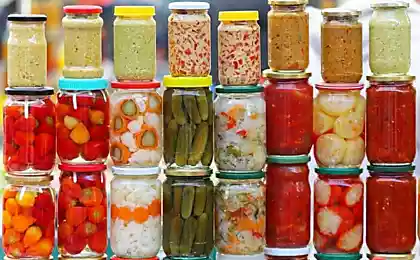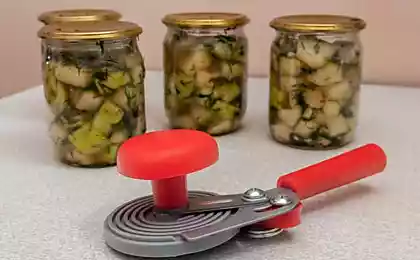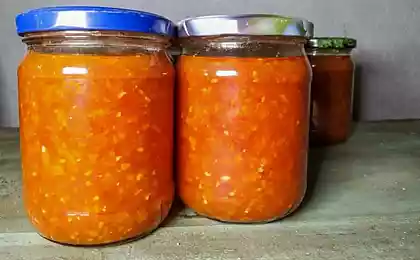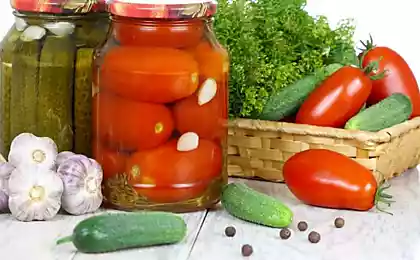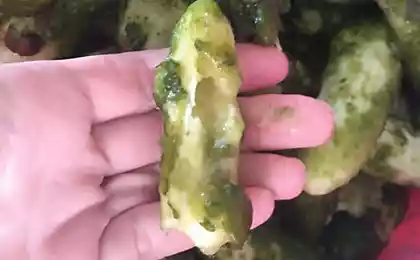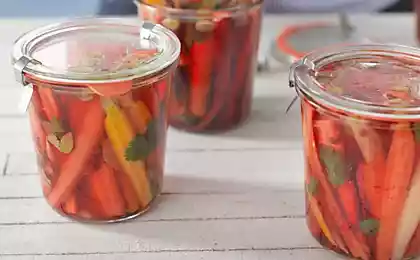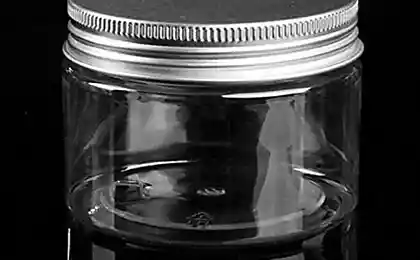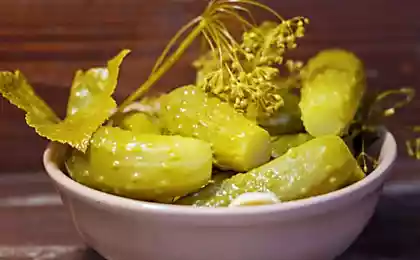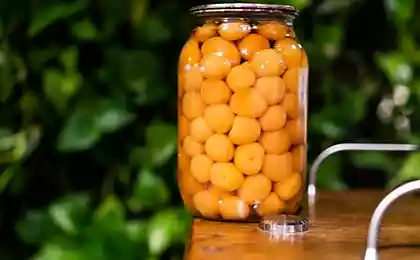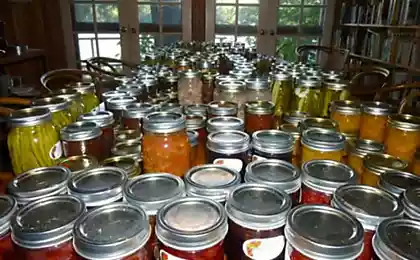195
What to look for when choosing lids for twists from expensive products
Good lids for conservation are designed to keep our hard-won twists for the whole winter.

After all, the slightest violation of tightness will lead to spoilage of products. This is what we would like to see last.

Therefore, the choice of covers should be taken seriously. Tin SKO, screw twist-off, plastic or vacuum? There are many options. They all have their strengths and weaknesses.
Tin rolling sko metal sko with rubber sealing rings - this is a proven classic.

The standard regulates their use in home and factory conditions for the closure of glass cans with a corolla of neck type I-82 (run-in with a diameter of 82 mm).

Once these covers had no alternatives and still enjoy wide popularity, despite their disposability and the need for a rolling machine.
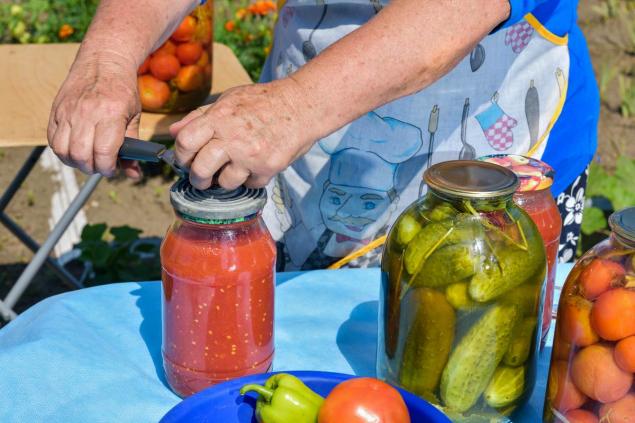
The advantages of sko covers include good tightness, huge reserves of cans with a suitable corolla and a fairly low price. The disadvantages are the complexity of conservation and the risk of spoilage of products when the key is malfunctioning.
Covers screw twist-off (Euro caps) Swirling lids for carving cans are perhaps the most popular today. They do not require a rolling machine and with some reservations allow use up to 3-4 times.

Compared to conventional tins, euro caps are denser, which means there is less risk that they will swell. It's a good look, though. Some housewives consider this moment rather a disadvantage. Like, when an ordinary lid swells, it is immediately clear: something is wrong with conservation and it needs to be urgently saved.
The real disadvantages of screw covers include a higher price, the complexity of opening (can be solved by buying a special key), a lower prevalence of cans with threads.
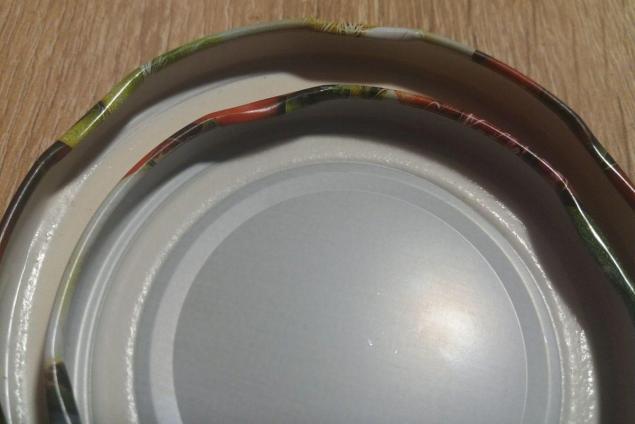
The inside of the twist-off covers is covered with a polymer coating. It softens in hot water and allows you to close the jar most tightly. Therefore, before use, such covers should be kept in water heated to 60 degrees.

Like conventional tin covers, screw covers come with different internal coatings (more or less resistant to chemical influences). For compotes and jams, an ordinary lid is suitable, and for salty and sour blanks it is better to use instances with a lacquered coating.
Plastic thermal covers should not be confused with ordinary caprons. Plastic covers are much denser than capron and often have on the upper side the inscription “heat cap” or “before closing hold in boiling water for 15 seconds”.

This cover can only be used once. After complete cooling, the lid is compressed and a small depression should form in its center. It means you did the right thing. The lid created a vacuum in the jar and your products were completely safe.
This is the youngest and most technically challenging participant in our review. The vacuum cover is not cheap, but it can be used up to 200 times! You will also need a special pump, which is not much more expensive than a rolling key.

You can use such covers with any glass cans (with or without threading). The main thing is that the neck is smooth, without cracks and chips and has a standard size of 82 mm.
Vacuum covers are easy to use, do not require significant physical effort, perfectly preserve the tastes and aromas of products. And according to the instructions, can be used for vegetables, compotes, jelly, jam, fruit, but (note!) not pickles.

A can with conservation when using vacuum covers should be filled with water, without adding 3-4 cm to the edge, as when pumping air pump water begins to foam and rises up. Vacuuming in this case should be stopped and repeated after the foam settles.

After all, the slightest violation of tightness will lead to spoilage of products. This is what we would like to see last.

Therefore, the choice of covers should be taken seriously. Tin SKO, screw twist-off, plastic or vacuum? There are many options. They all have their strengths and weaknesses.
Tin rolling sko metal sko with rubber sealing rings - this is a proven classic.

The standard regulates their use in home and factory conditions for the closure of glass cans with a corolla of neck type I-82 (run-in with a diameter of 82 mm).

Once these covers had no alternatives and still enjoy wide popularity, despite their disposability and the need for a rolling machine.

The advantages of sko covers include good tightness, huge reserves of cans with a suitable corolla and a fairly low price. The disadvantages are the complexity of conservation and the risk of spoilage of products when the key is malfunctioning.
Covers screw twist-off (Euro caps) Swirling lids for carving cans are perhaps the most popular today. They do not require a rolling machine and with some reservations allow use up to 3-4 times.

Compared to conventional tins, euro caps are denser, which means there is less risk that they will swell. It's a good look, though. Some housewives consider this moment rather a disadvantage. Like, when an ordinary lid swells, it is immediately clear: something is wrong with conservation and it needs to be urgently saved.
The real disadvantages of screw covers include a higher price, the complexity of opening (can be solved by buying a special key), a lower prevalence of cans with threads.

The inside of the twist-off covers is covered with a polymer coating. It softens in hot water and allows you to close the jar most tightly. Therefore, before use, such covers should be kept in water heated to 60 degrees.

Like conventional tin covers, screw covers come with different internal coatings (more or less resistant to chemical influences). For compotes and jams, an ordinary lid is suitable, and for salty and sour blanks it is better to use instances with a lacquered coating.
Plastic thermal covers should not be confused with ordinary caprons. Plastic covers are much denser than capron and often have on the upper side the inscription “heat cap” or “before closing hold in boiling water for 15 seconds”.

This cover can only be used once. After complete cooling, the lid is compressed and a small depression should form in its center. It means you did the right thing. The lid created a vacuum in the jar and your products were completely safe.
This is the youngest and most technically challenging participant in our review. The vacuum cover is not cheap, but it can be used up to 200 times! You will also need a special pump, which is not much more expensive than a rolling key.

You can use such covers with any glass cans (with or without threading). The main thing is that the neck is smooth, without cracks and chips and has a standard size of 82 mm.
Vacuum covers are easy to use, do not require significant physical effort, perfectly preserve the tastes and aromas of products. And according to the instructions, can be used for vegetables, compotes, jelly, jam, fruit, but (note!) not pickles.

A can with conservation when using vacuum covers should be filled with water, without adding 3-4 cm to the edge, as when pumping air pump water begins to foam and rises up. Vacuuming in this case should be stopped and repeated after the foam settles.
Jam from the flesh of watermelon for the winter from the sultry southern beauty
Why would a woman whose beauty is fading put an orchid in the mirror?

